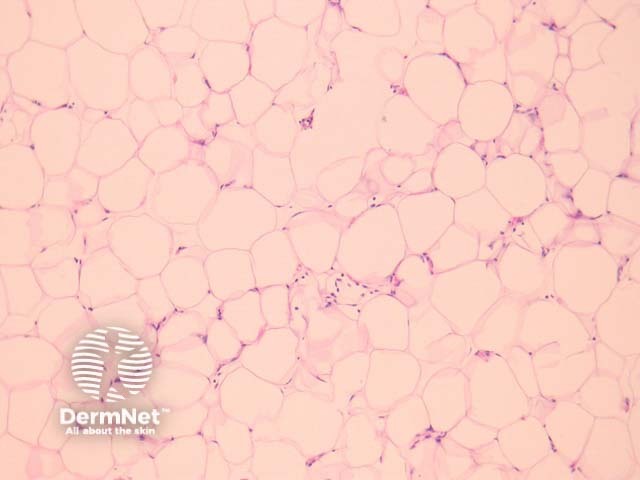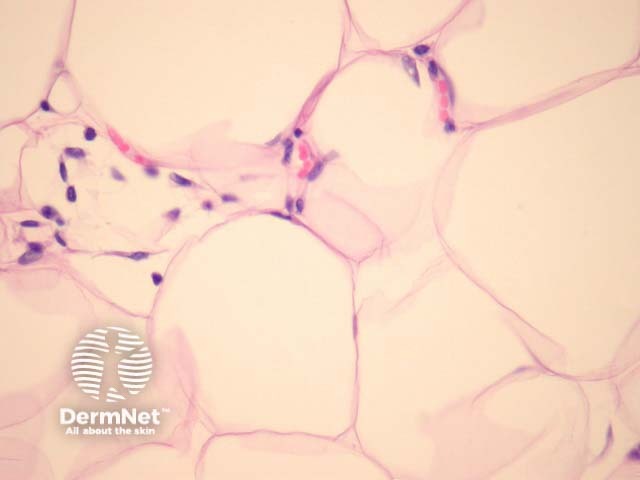Main menu
Common skin conditions

NEWS
Join DermNet PRO
Read more
Quick links
Lipoma pathology — extra information
Lesions (benign) Diagnosis and testing
Lipoma pathology
Authors: Assoc Prof Patrick Emanuel, Dermatopathologist, Auckland, New Zealand, 2013.
Lipomas are common, usually asymptomatic tumours composed of mature adipose tissue. They have a predilection for the subcutaneous tissue of the trunk and extremities but have been described in a wide range of anatomic locations. They occur in multiplicity in several distinct clinical syndromes.
Histology of lipoma
Sections show mature adipose tissue (figures 1-3). The fat contains few small capillaries within thin fibrous strands. A thin fibrous capsule is often seen.
Fat necrosis and other inflammatory changes may be seen when lipomas are traumatised.

Figure 1

Figure 2

Figure 3
Special studies for lipoma
Cytogenetic abnormalities can be identified in approximately half of lipomas but are generally not required for diagnostic purposes. Characteristic rearrangements involve chromosomes 12, 6, and 13.
Differential diagnosis of lipoma
Normal fat — Distinction from normal fat can sometimes be difficult. Circumscription and encapsulation of lobules favours a lipoma. Clinical history may be essential, especially when dealing with emulsified fat specimens (liposuction specimens from lipomas or weight loss procedures).
Well-differentiated liposarcoma — Some areas of well-differentiated liposarcoma can be exceedingly bland and mimic a lipoma. Liberal sampling and histologic examination of fatty tumours is recommended to search for atypical areas.
References
- Weedon’s Skin Pathology (Third edition, 2010). David Weedon
- Pathology of the Skin (Fourth edition, 2012). McKee PH, J. Calonje JE, Granter SR
On DermNet
- Dermatopathology glossary
- Lipoma
- Pleomorphic lipoma pathology
- Angiolipoma pathology
- Spindle cell lipoma pathology
- Hibernoma pathology
- Liposarcoma pathology
- Dermatopathology index
